A View from Broadway
John Newton (right) at his home with the author.
A visit with My Friend John
By Ken Burdick
August 2022
Yes Folks, itís true.
When I pulled up to his home in Crescent City, Calif., the garage door was open and John was sitting there working on my D Speed ship. It had met with disaster at the 2022 Northwest Regionals.
The airplane is a well-built Newton sidewinder and it just looks fast. Under the tutelage of John Iím sure it will be again.
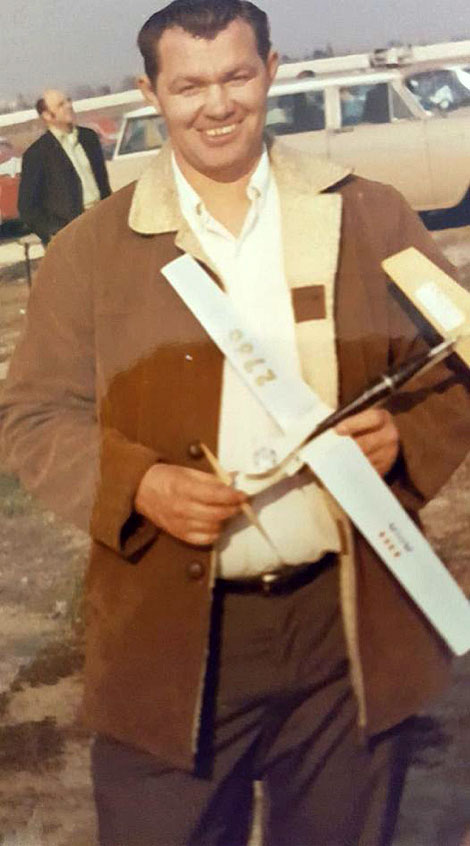
John Newton has forgotten more about Speed flying than
most of us will know. He began his journey on April 11,
1933, and currently is a trim 89 years old.
Iím going to mainly focus on the model aircraft aspects of his life, because there is much too much to put down here, so weíll stick to the highlights of his many accomplishments.
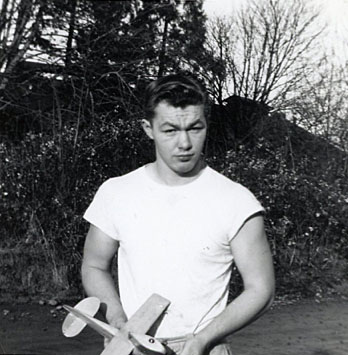
John was born and raised in Albany, Ore., and graduated from high school in 1952. Six years before this, John had a friend (Donnie Reed) who got him interested in model airplanes. John began with the whip-style models that have no engines, but were an early attempt at control-line flying. Power models came after his father gave him his first engine in 1949. Among other aircraft, he built a Hell Razor for that engine, and thus began a 69-year love affair with control-line Speed.

Nine months after high school graduation, John was working at a plywood factory in Albany. He could run any of the machines and was doing pretty well when Uncle Sam called and he was drafted into the Army. By this time, he was actively flying a C Speed ship with a McCoy .49 for power. John was honorably discharged from the army in in 1955.
Monoline was adapted to Johnís model in 1955, and he first flew monoline at the Sand Point contest in Seattle Washington, where he became friends with Jerry Thomas of Jet Speed fame.

After completing his military service, John met the love of his life, Carol, at a dance in 1957 and were married in 1958. They will celebrate their 64th anniversary in September 2022.
John and Carol moved to Los Angeles, where John would take a job with Carnation Dairy Products, and remain with them until he retired. While in LA, John was befriended by Bill Wisniewski, Jim Nightingale, Chuck Schuette, the Western Associated Modelers crowd and Dale Kirn. These were his real formative years of learning Speed. Until then he didnít know much about timing and modification of engines. John worked at Carnation and K&B as well as teaching flight on Fridays, making $6 an hour as a flight instructor.
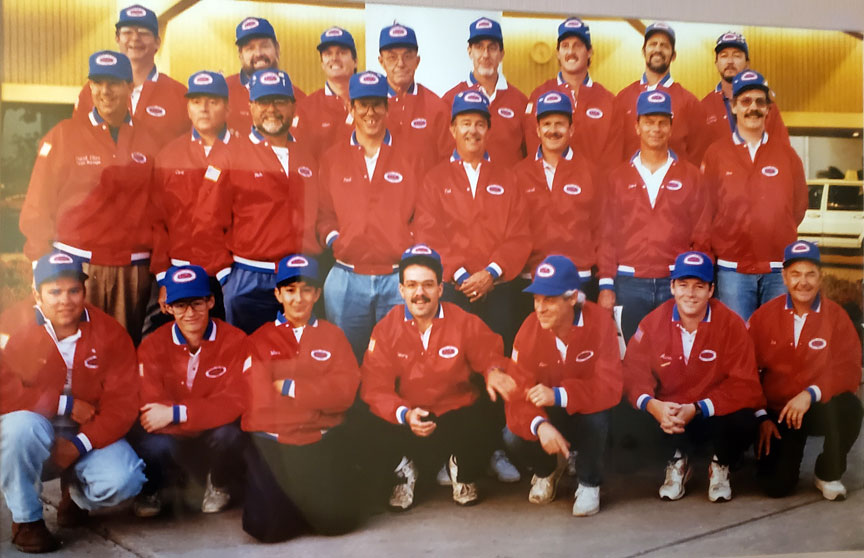
John represented the United States on seven teams that participated in the FAI world Championships: 1970, 1980, 1986, 1988, 1990. 1992, 1994. He told me he quit piloting the FAI ships in 1994 because he couldnít keep up with them anymore.
John focused on .21 Sport Speed after his international endeavors, and produced a conventional upright model that is used today by several in the event.
John mentioned to Phil McGee that he would like to build a D and B model in the asymmetrical style. Phil sent him two molds to produce the fuselage for the often-seen models. Phil built the engine, called the McGee .65 and John built the airplane. On 10% nitro, it turned 192 mph at the U.S. Nationals.
Further to that, he built the C Speed ship used by Dick Shannon, who turned 191 mph. The Nelson .40 that powered it was built by Tim Gilott.
Ken: "John, whatís your favorite memory
in model flying?"
John: "In FAI it was a three-way time
between myself, Paul Gibeault and Will Naemura. The times
were identical at 179.70 mph.".
John also flew full-scale aircraft, and has many of stories about his years as a pilot. He has instructed hundreds of students who have gone on to be pilots. He as kept the several log books that are filled with the records.
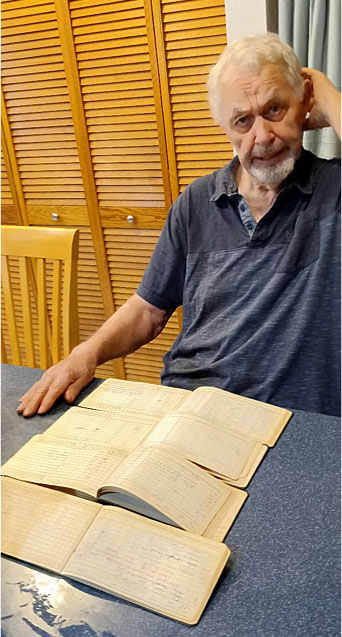
So, lil' geezers, when you see John Newton sitting at the Northwest Regional Championships, heís keenly watching who is doing what. Why he decided to befriend me, Iíll never know. Maybe he got a kick out of me and Mike Hazel trying to get the D Speed to run over 180 mph. We have, but not while John was watching. Whatever the reason, I am grateful for the help he has given me.
He built my current D ship as a generous gift, dolly included. Enclosed are some pictures of aligning the wing to a positive incidence using a logan lathe. The crankshaft of the assembled model is held in his lathe and the wing leading edge and trailing edge are then measured to a reference plate on the lathe bed.
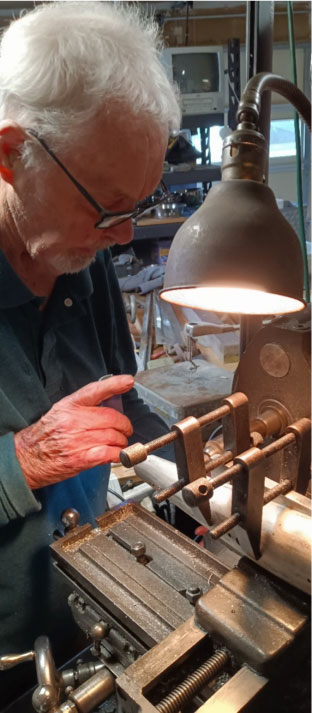
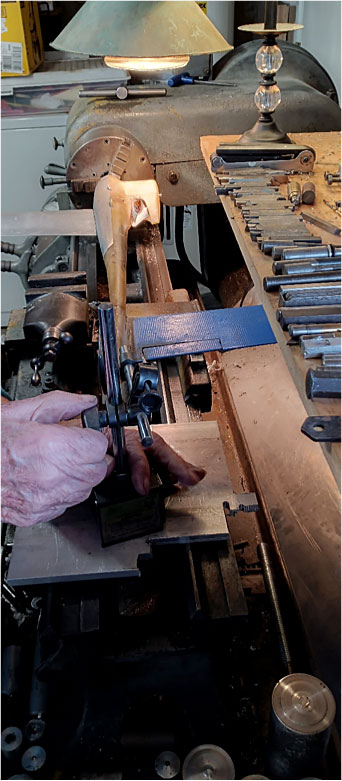

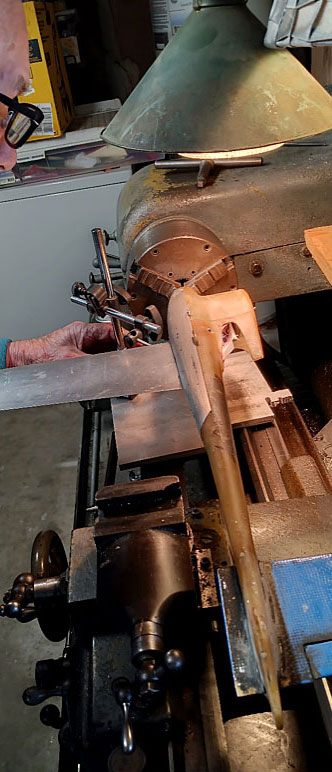
Back to Bod Busters main page
Back to Racing main page
Flying Lines home page
This page was updated July 8, 2022

